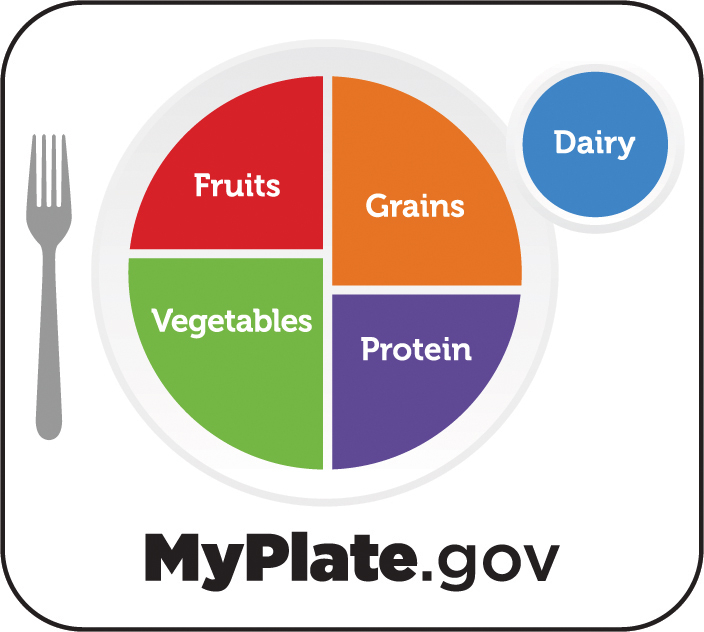News | Community
Make Every Bite Count. New Dietary Guidelines to Promote Health and Reduce Disease.

A Conversation with Helene Rosenhouse-Romeo, RD, CDN, CLC, MPH, Director of Ryan Health WIC Program and Nutrition.
The federal government recently released new Dietary Guidelines to promote health. Ryan Health Director of WIC and Nutrition Helene Rosenhouse-Romeo explains what the new Guidelines entail.
Why do we have new Dietary Guidelines? What’s different in the new version?
The Dietary Guidelines for Americans 2020-2025 is a science-based joint publication of the U.S. Departments of Agriculture and Health and Human Services. They were first published in 1980. New guidelines are mandated every five years. The 2020-2025 Guidelines highlight the importance of good dietary patterns for every stage in the lifecycle. They are the first to include recommendations for infants and children under two years of age, and pregnant women.
What is the goal of these new Guidelines?
The goal of these and past Dietary Guidelines is to promote good health and reduce disease in the nation. These Guidelines are used to develop, implement, and evaluate federal food, nutrition, and health policies, and programs, like Ryan Health’s Women, Infants and Children (WIC) Supplemental Food Program. These Guidelines discuss what a healthy eating pattern looks like instead of providing a menu of specific items to eat and drink.
Is there anything surprising in these new Guidelines, or anything dramatically different than what they’ve advocated in the past?
The focus of these Guidelines is to “Make Every Bite Count.” Each new recommendation includes the latest scientific research to address questions about how eating various foods and beverages affects health. These new Guidelines emphasize that everyone throughout every life-stage, regardless of their health status, can benefit from shifting their food and beverage choices to achieve a healthy dietary pattern.
Do the new Guidelines recognize the challenges that many people have in eating healthy — like the availability and cost of fresh foods?
These Guidelines provide elements of a healthy dietary pattern. They can be customized to meet cultural, economic, and personal preferences. For example, we know the benefits of eating vegetables. But the types of vegetables and form they take can vary by an individual throughout your life. Still, the health benefits remain.
Do the new Guidelines discuss the role a healthy lifestyle and the importance of exercise can play in a healthy diet?
These Guidelines are just one piece of a complex puzzle that influences health. While they focus on food and beverage patterns associated with good health, these Guidelines work together with other behaviors. Exercise, not smoking, maintaining a healthy weight, and managing stress, all play a part.
Do the new Guidelines tell people specific foods to avoid?
No. This is not a list of “don’ts.” No single food item is called out either positively or negatively. Instead, the emphasis is on creating dietary patterns built on nutrient-dense foods and beverages. Something is considered nutrient-dense when it provides vitamins, minerals, and other necessary components, and has little or no added sugars, sodium, and saturated fats.
We all remember the Food Pyramid, but now we have the MyPlate Plan. What’s the difference in the outcome?
The MyPlate is a graphic representation of daily recommendations for consumption of some food groups. It is clearer than the Food Pyramid was. Using the MyPlate model provides a way to follow the new Guidelines. If you eat according to MyPlate, you are likely to be following the Dietary Guidelines.

Are there new limits for daily calorie intake?
The Dietary Guidelines discuss calories as they pertain to specific populations. Remember, the Guidelines are not a daily diet but are a guide for the various stages of our lives to build and develop a healthy pattern of eating. By emphasizing what is required to have a healthy dietary pattern and challenging us to “make every bite count,” you can read between the lines. If you eat food and drinks with a lot of sugar and no other nutritional value, chances are you will gain weight.
Meeting with a Ryan Health nutritionist is a great way to discuss individual nutritional needs based on your own health needs. To make an appointment, use the MyCare Portal or call 212-749-1820.